Witness the Transformation: A 12-Month Journey on the Peaks of Koli
Article by Maarit Jääskeläinen
I have now witnessed the full cycle of a year in Koli national park and its summits. I arrived in late winter when the days had already started to lengthen and the sun brought warmth. I speculated on when Lake Pielinen would shed its icy cover. I watched as the snow turned into a slushy mush during the thaw, making movement cumbersome. In the summer, I observed the endless stream of people flocking to the best viewpoints – and why not – I, too, am taken aback by these landscapes! With the arrival of autumn, things quieted down, but the scenery remained just as magnificent, albeit different once more. Winter brought whiteness and softness; nature quieted down and seemed to come to a standstill. The trees at the peaks donned a coat of heavy snow, and trekking up to the peaks on snowshoes felt like stepping into an entirely new world. I spent the year traversing the summits, gazing at the landscapes. Sometimes my eyes reached across Lake Pielinen and beyond, and just as often, visibility was shrouded in fog that beckoned a closer look. Welcome to follow my year in Koli!
May
Spring is present, summer is on the horizon, and the ice on Lake Pielinen has turned dark. It won’t be many days from the moment of taking this picture until the ice gives way and disappears. Finland’s fourth-largest lake is free once again. The snow lingers longer in the area around the summits than in the surrounding lowlands.
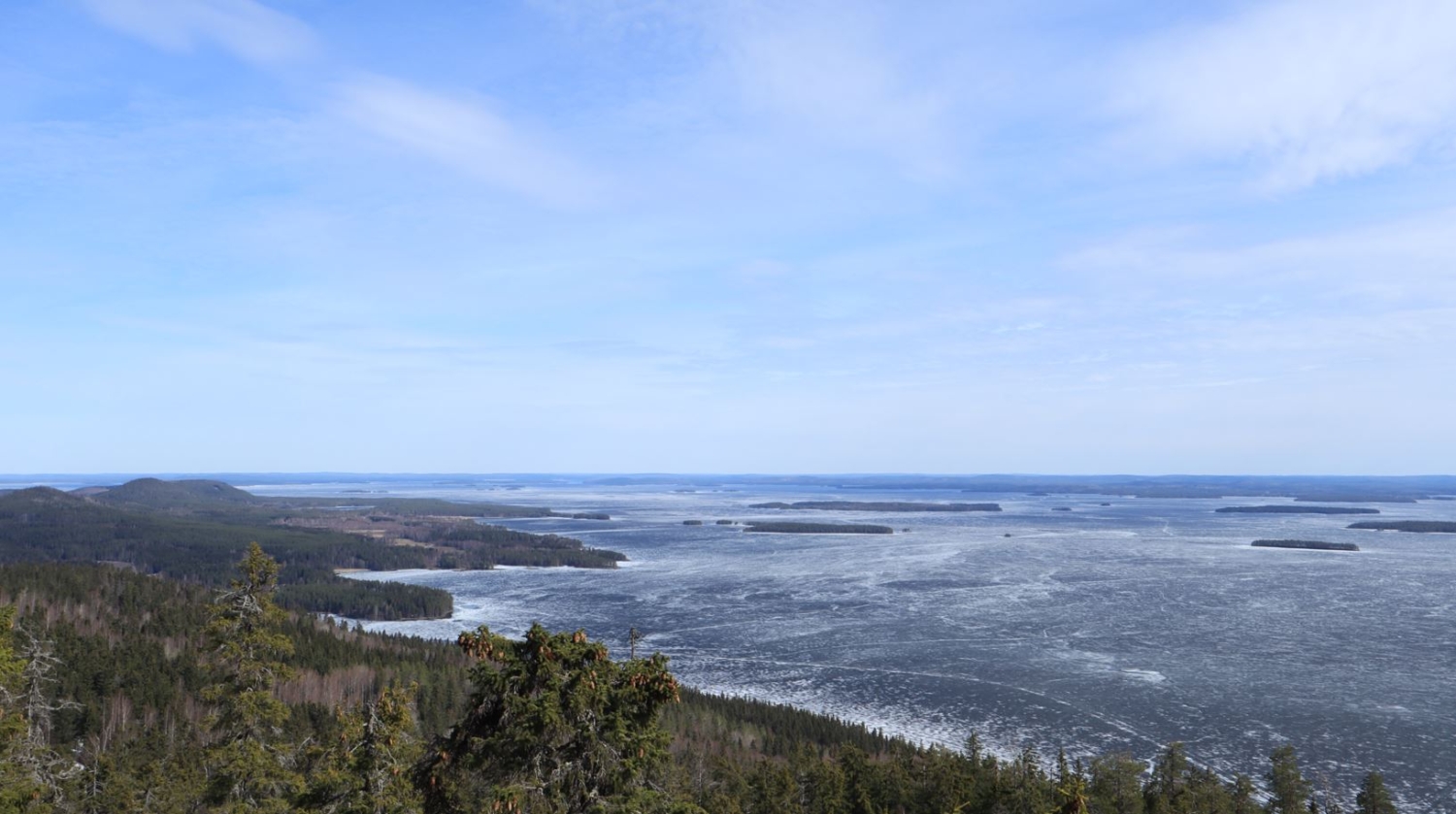
June
In the picture, the leaves on the trees are quite large but still the pale green of early summer. I often stopped by this viewpoint before heading to work to rest my gaze over Lake Pielinen. The clouds create a beautiful atmosphere and contrast in the landscape.
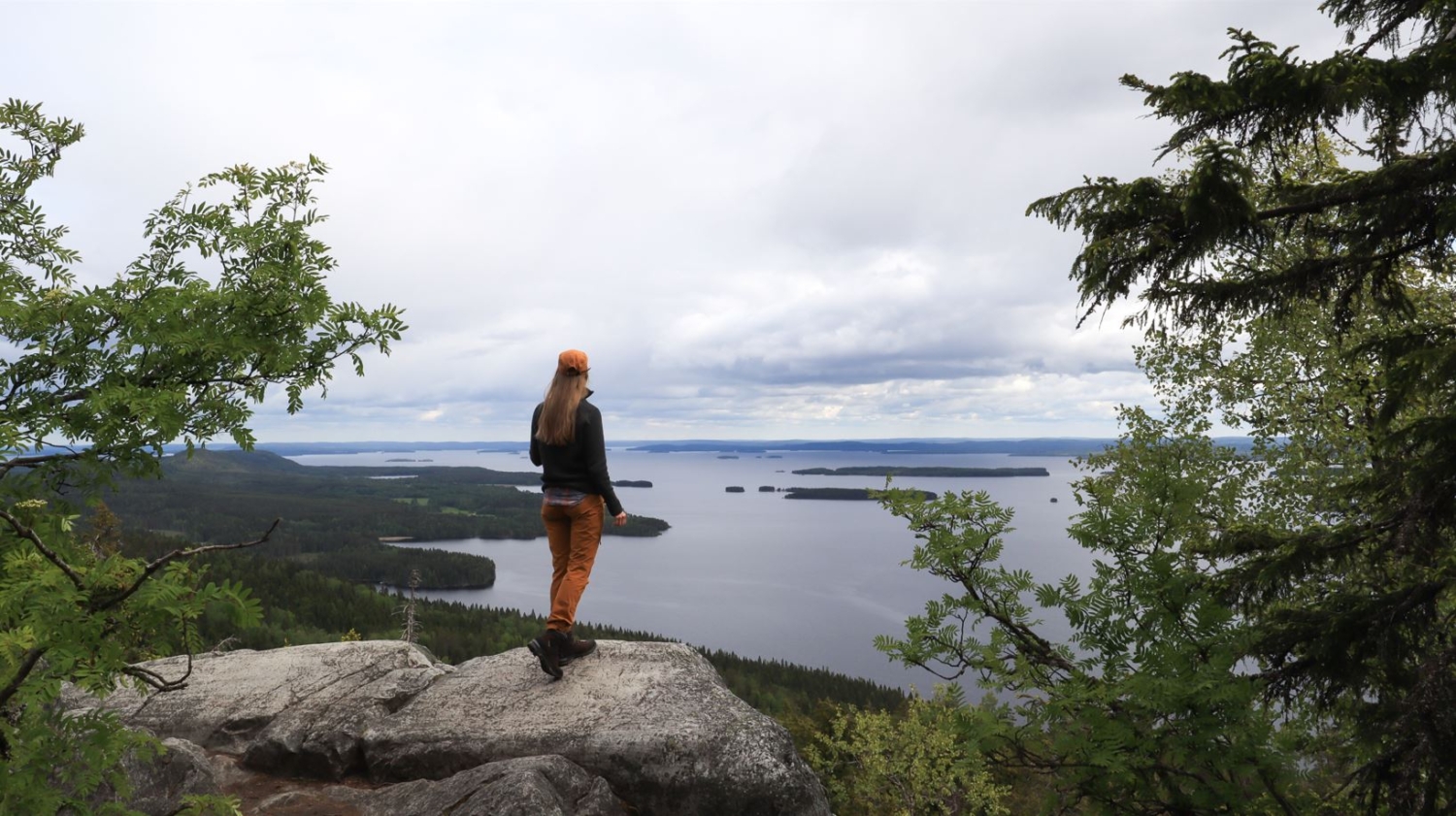
July
It’s a foggy day on the summit of Akka-Koli. The landscape remains hidden, but the atmosphere is unique. In the picture, the summits’ white quartzite rock is beautifully visible. It’s fascinating to think that this spot once rose to the heights of the current Himalayas as part of the ancient Karelides mountains, and now I sit at the “roots” of this mountain range.
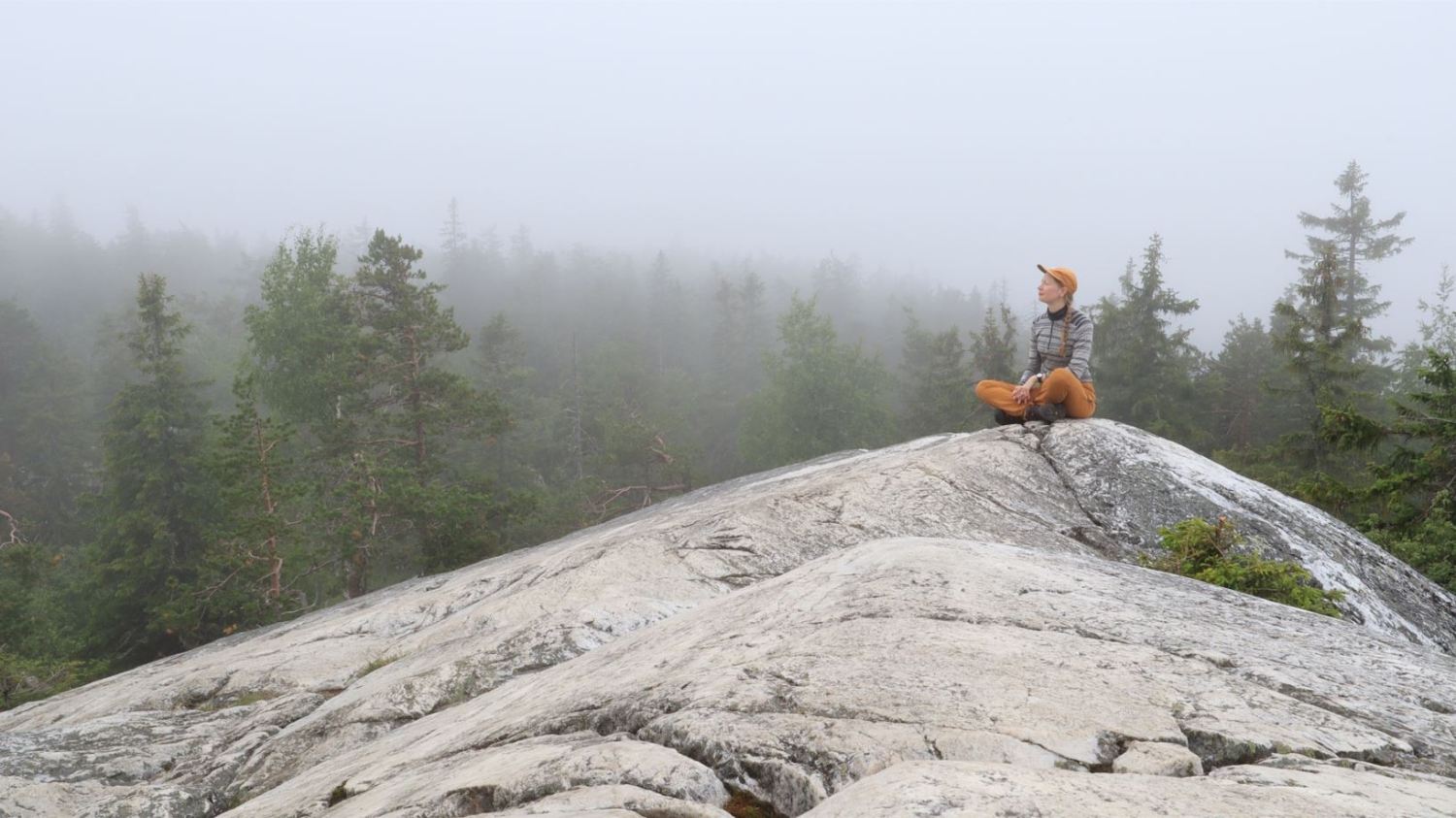
August
I’m on a day off and take a trip to the sunny cliffs. Lake Pielinen is rarely this calm. Perhaps it was the finest day of the summer! There are hardly any signs of human presence in the landscape: no summer cottages, not many motorboats. The picture is almost as wild as when the great Karelian painters discovered the Koli hills and were inspired by what they saw. The nearest islands belong to Koli National Park and are dedicated to nature and the occasional visitor. The picture also shows the charming island named Tappi (“drain plug”). Do you know which one of the islands it is?

September
The picture unfolds the full glory of the Koli peaks from Mäkrä’s perspective. I wanted to see the landscape as Eero Järnefelt might have when painting his famous “Autumn Landscape from Pielisjärvi.” In the foreground rises Pieni-Koli and further back, as the highest point, Ukko-Koli. To the right, the Loma-Koli hills such as Sutkanvaara, Käränkkävaara, and Rintasenvaara stretch out in blue. In the foreground, there’s an old and magnificent pine that has now lost its needles.

October
I climb to the top of Paha-Koli on a crisp frosty morning before the workday begins. A thin, treacherous layer of ice has formed on top of the summit, which I luckily notice in time. In the foreground, the islands of Pieni-Hölö, Iso-Hölö, and Matoset are rocky, while most of the islands visible from the summits are sand islands, remnants of the last ice age.
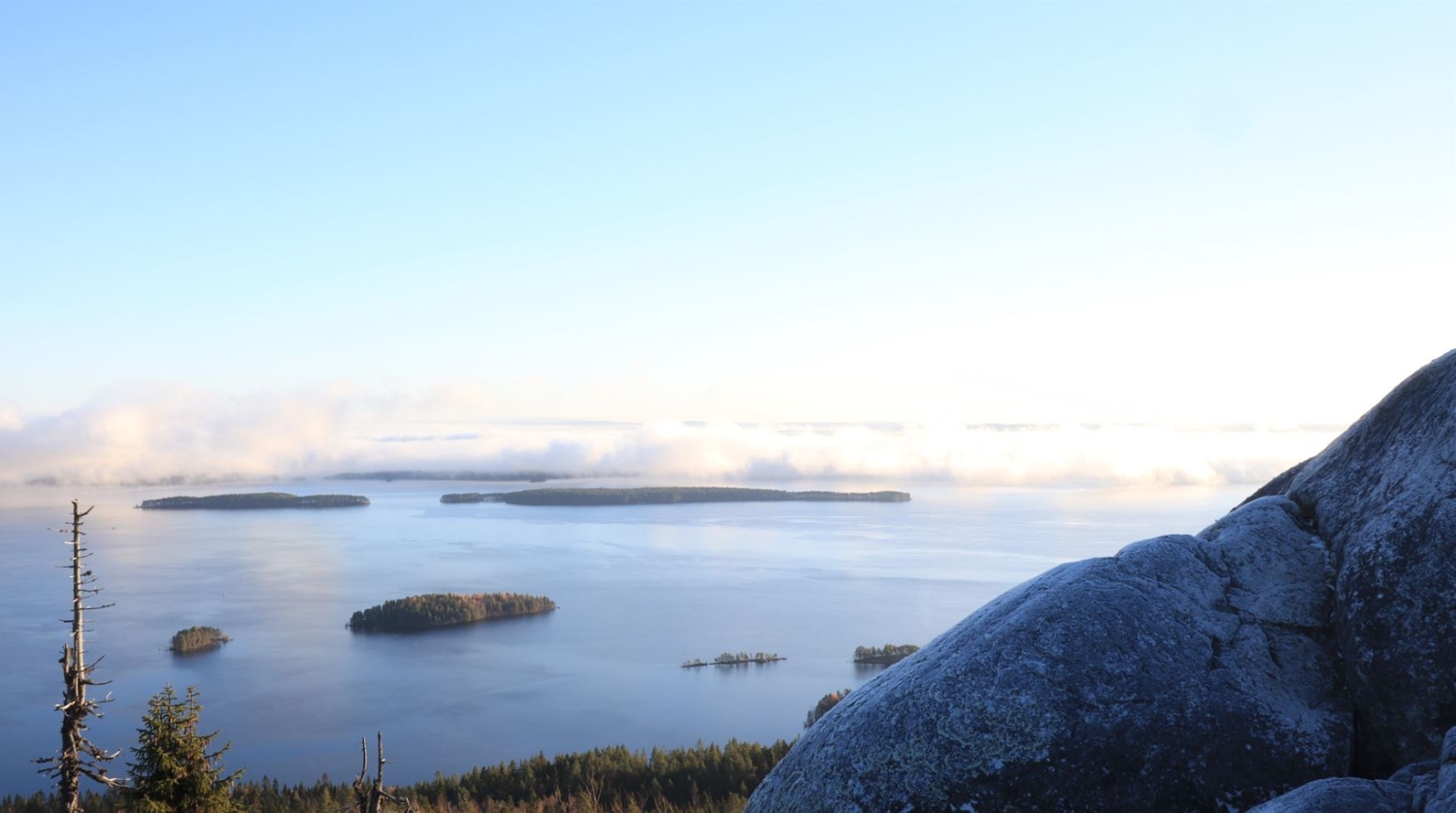
November
Winter arrives in Koli in November with plenty of snow, and the cold persists throughout the early winter. Lake Pielinen freezes over, and trees quickly become covered in snow. The morning sun reveals a landscape from Akka-Koli, from where, on a clear day, you can see several lakes: Lake Pielinen is on the left, Jero Lake is in the foreground on the right, and Herajärvi is further back. The Herajärvi trail (61 km), which starts from the summits, encircles the entire Lake Herajärvi.
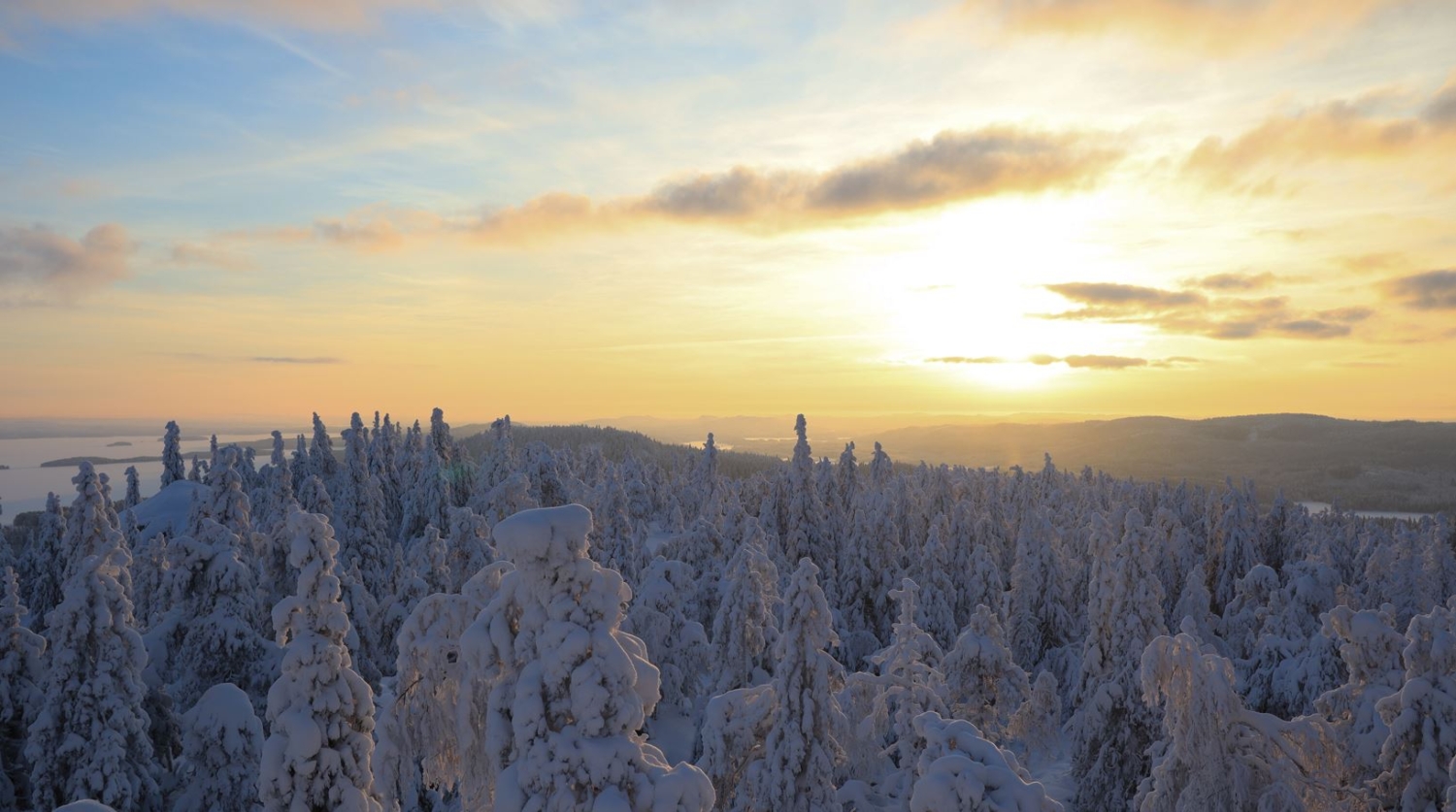
December
The picture shows the summit of Paha-Koli with Belt of Venus. This phenomenon can be observed on the opposite horizon from the sunset, in the eastern sky, and below it, the earth’s own shadow is visible. The Belt of Venus appears brighter the more moisture and dust there are in the atmosphere.
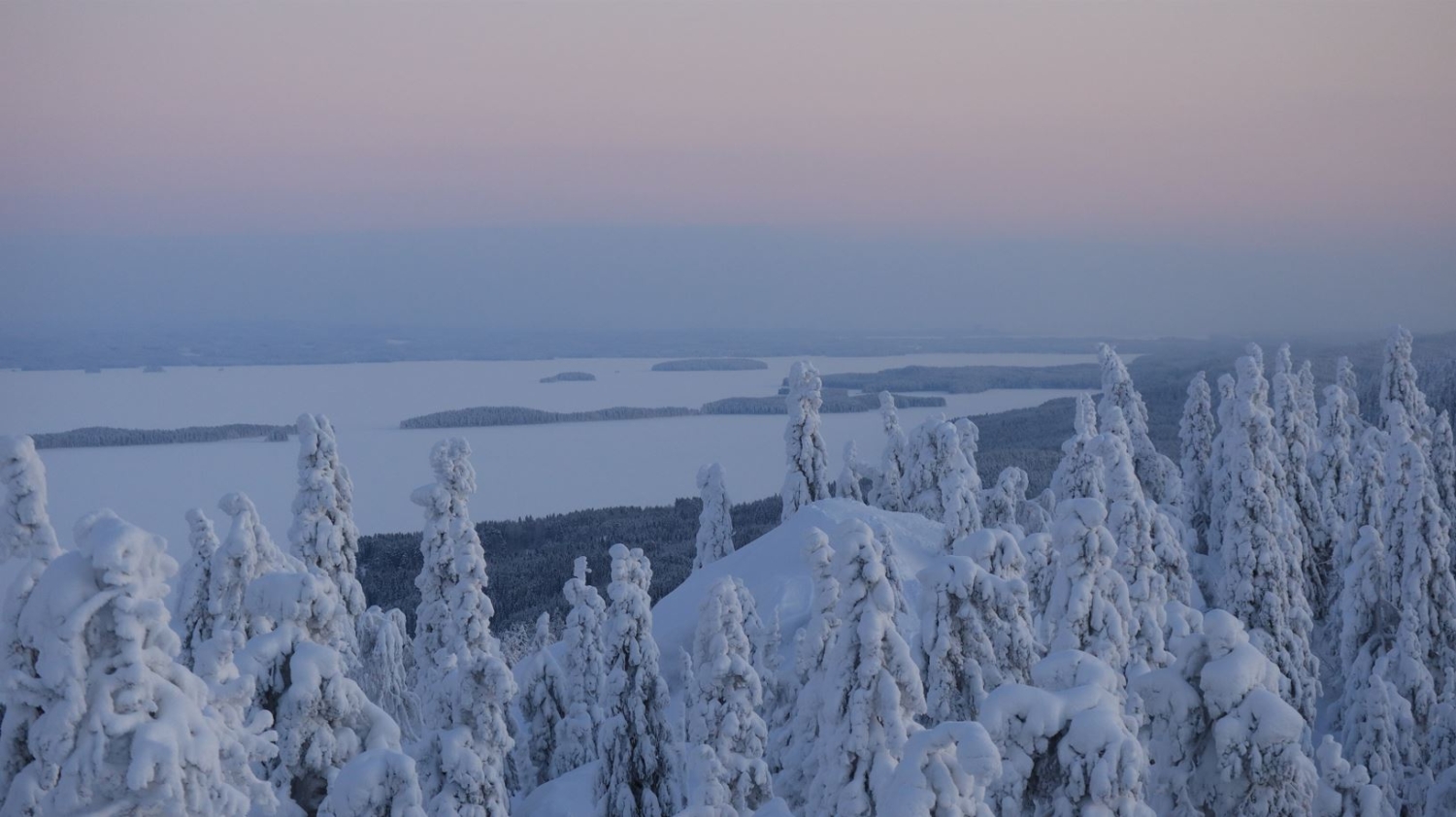
January
That morning, we set out for the summits to welcome the sunrise. It might have been around twenty degrees below zero, at least it felt that cold. We equipped ourselves with snowshoes and poles and began by following the marked snowshoe trail to the summits. The photo location is a bit south of Paha-Koli. On the second to last day of January, the sun was at the height captured in the picture around 9 AM. It was worth waking up early, the sunrise was spectacular! Of all the seasons, I find the Koli peaks to be most magnificent during these late-year and early-winter frosty days at sunrise and sunset. Then, the sun paints the landscape and the frost-covered trees incredibly beautifully.
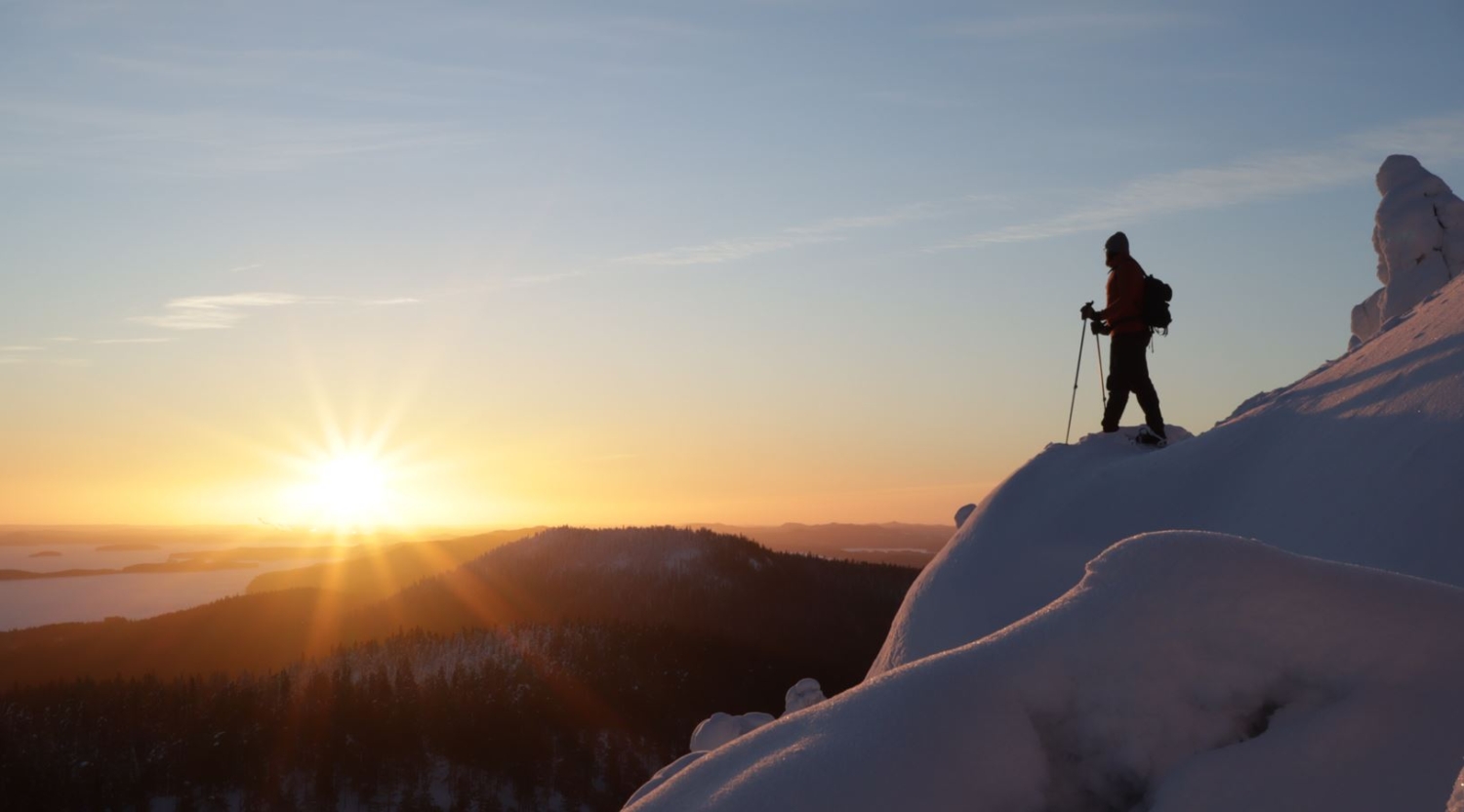
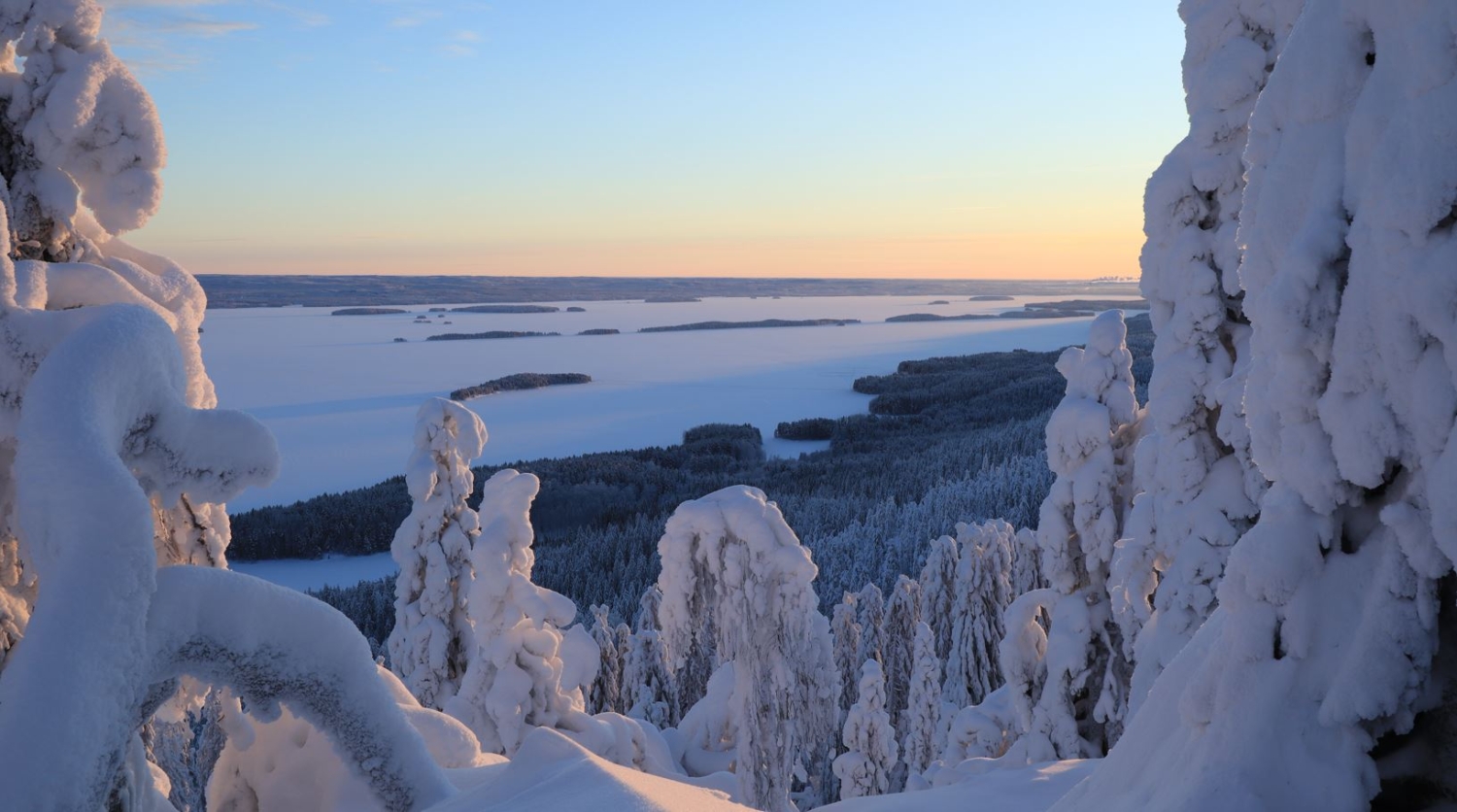
February
On a foggy, cloudy day, there’s a very special atmosphere among the frost-covered trees. When the landscape is not visible, one examines the gnarly shapes of the trees and the snow-bowed tops. The snowy trees are like friendly giants next to which one feels very small. During the winter, a single tree can carry a snow load of several thousand kilos.
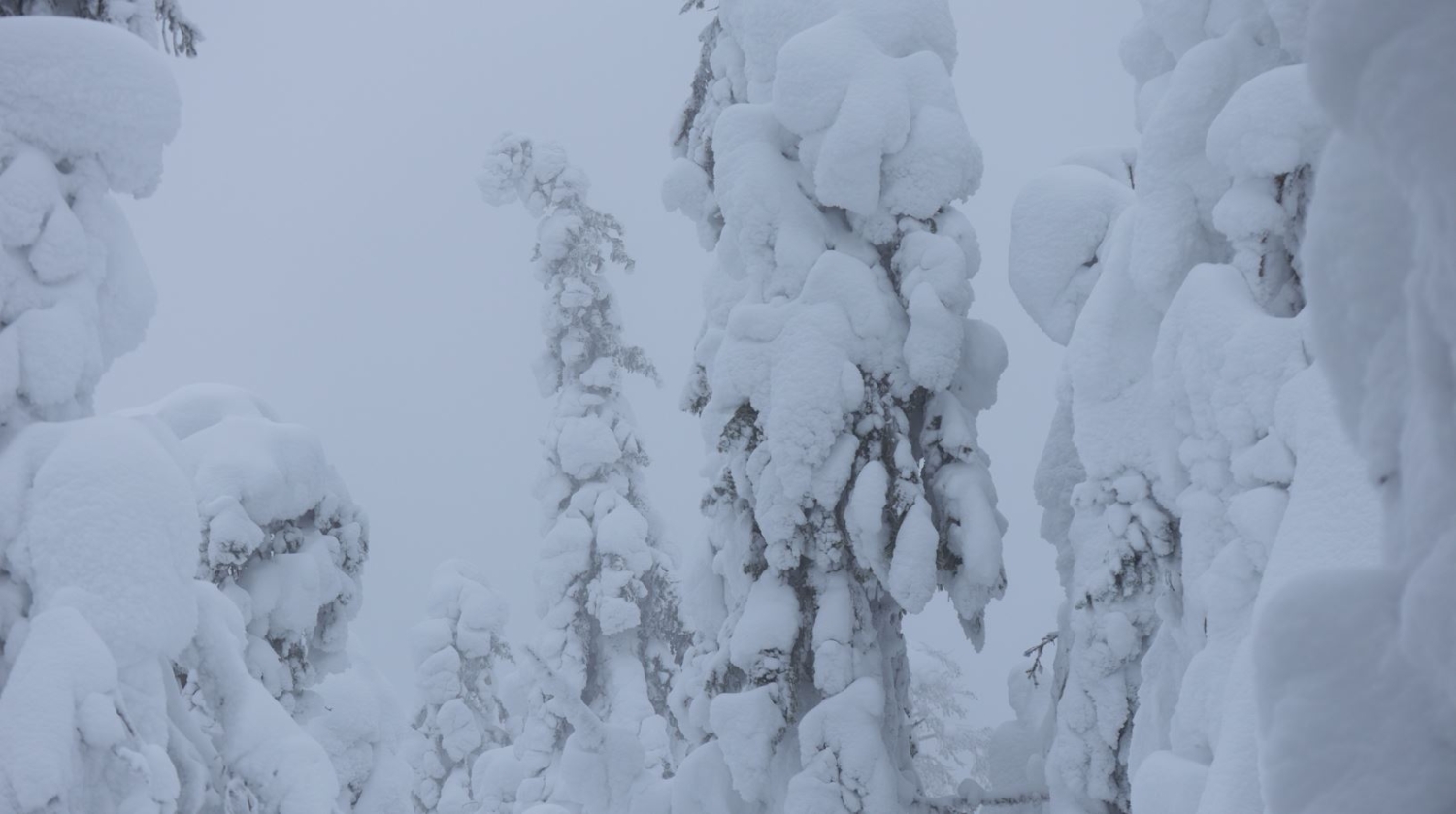
March
The day lengthens, and the air once again carries a hint of spring. The sun warms and melts the snow on the trees into glittering icicles. If conditions are just right, Lake Pielinen turns into a vast paradise for ice skating in the spring.
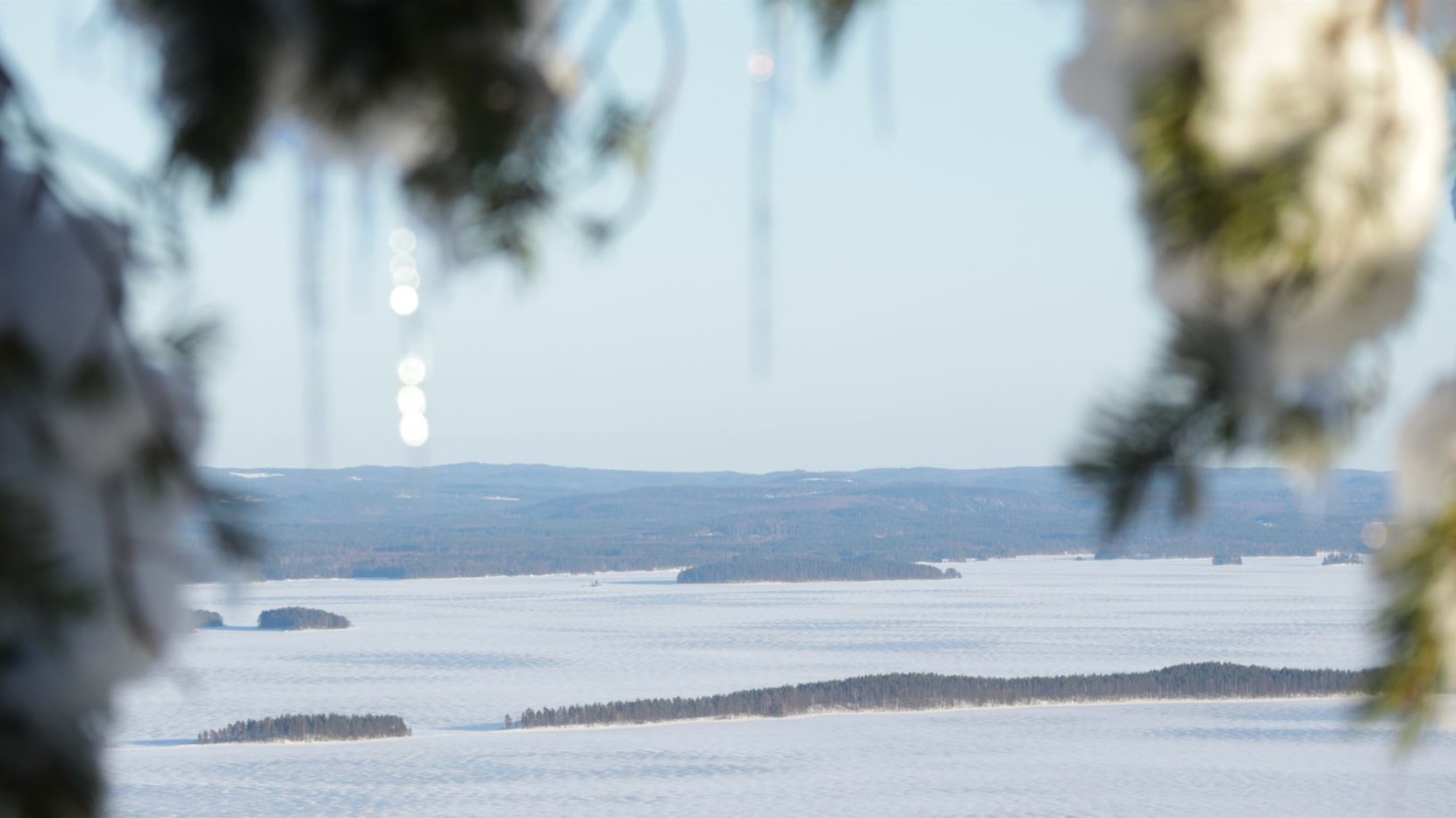
In hindsight, I realize that I didn’t take any pictures from the highest point of the summits, Ukko-Koli. My favorite spots seem to be on other summits, although I regularly visited all the places following the 1.4 km long Summit Trail.
When visiting Ukko-Koli, my gaze often returned to recite the quotation on the information board:
“Koli’s most significant value is its spiritual touch, its ability to elevate us towards something greater, its ability to awaken and stop us to think about why we exist.”
Ilmari Martikainen
The phrase is by Ilmari Martikainen, a local nature guide and an activist for the national park’s establishment. I think he has captured something inherently Koli and something that I, fortunately, have also been able to experience.
This post is also available in: German

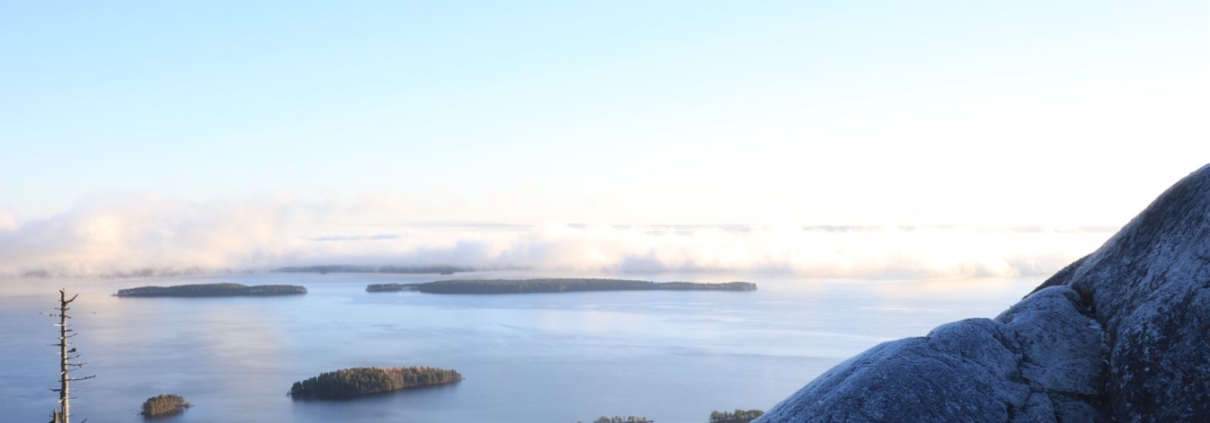




Leave a Reply
Want to join the discussion?Feel free to contribute!